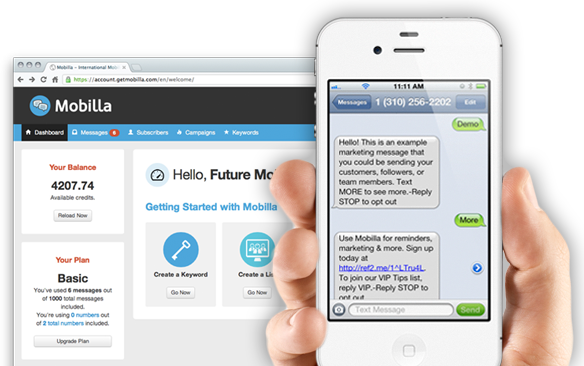Cell phone this, iPad that. Around half the time America spends nowadays on the Internet is through some sort of mobile device. With the emergence of the mobile web comes the opportunity to try new things and become a gamechanger in the market. Glenn Cole at 72 & Sunny says that “Mobile devices are now the place where you can have your most meaningful, most valuable, and even most inspiring relationship with a brand.” What are some of these ways and what do you need to know now to stay ahead of the curve on this emerging field? Let’s brush over some of the basics and explore some possible ways you can harness the mobile web environment for your company’s gain:
1. Mind the Medium
Understand that mobile web is a different animal than regular web. Keep it simple, stupid. Mobile web is viewed on tiny screens and navigated with stubby fingers. The typical mobile web user isn’t going to be concerned with lengthy company bios, wordy mission statements or press releases. Mobile web users want quick hard info; they want photos and products/services to be provided up front in an easy to use way. Simply put: give them the facts. Retain the familiar tones and themes of your traditional website; your mobile site’s user interface should take after your traditional site and friendly to those navigating within such a compact medium. Also be aware that many phones and tablets, particularly iPhones and iPads, do not use or allow flash; so make sure to not use it when programming your site.
2. Mobile Web is Mobile
It may seem like a no-brainer, but things like this can often be neglected at the research and development phase. Think of your end user. Where will he/she be viewing your web site? Will they be on a tablet? A smartphone? What is nearby the user when he/she is checking your page? Assessing these variables can yield some great ideas on how to create an interactive experience with your site. Mobile marketing allows you to target those nearby the location of your business. For example, if you’re a local restaurant owner and a pedestrian decides to search for “good food nearby”, you could possibly appear as a top result in whatever medium they decide to search for you in. Companies like Chili’s have succeeded in using location based coupons to attract more customers. In Chili’s case, they offered a free queso dip appetizer to anyone within 200 yards of a Chili’s or adjacent commercial location. There are a few location-based ad services that are worth researching, including Google’s Admob, Apple’s iAd service and Millennial Media.
3. Mobile Web Is Interactive
A new word being thrown around the web these days is “gamification” which is just a buzz word for the integration of game mechanics or game dynamics into a website, service, community, campaign, or application in order to drive participation and engagement. Think of gamification like a modern day version of frequent flyer miles or hotel loyalty programs. Location based services like Foursquare uses “checking in” to your local spots and offering up “mayorship” (the Foursquare user who has checked in the most at a location) as a form of gamification. Other sites like Gowalla will offer badges to gamify locations, encouraging users to visit multiple locations and rewarding those who do with online promotions. Consider promoting photo/video-uploads to your social media pages. Working interactively with your clients will tie their emotions with your company and may create an ambassador for your brand.
4. Mobile Web Is Contextually Different For Each Company, Customer, and Situation
No path is ever walked the same way twice. Apply that old adage to the way that you think about your mobile web presence. How is your client most likely to be using your mobile site? Will they be in a store, comparing your brand against another? Are they sitting at the bar on their tablet shopping online? Will they be standing on the side of the road looking for assistance? Put yourself in the customer’s shoes and aspire to make a site that is easy for them to use in the situation they will be in when they view your site. It is also good to imagine which platform they are accessing your site from, a site accessed from a tablet provides more space for larger images and grants a bit more leway for entering text. Someone viewing from a phone however, may not want to wait for larger images to load or input copious text with a small virtual keypad.
5. Mobile Web Gets Your Customers Through The Door
In the end, it should be noted that like all forms of media, a mobile website is a marketing tool, and all marketing tools need a call to action. However, a call to action for the mobile web can be a bit different. Mobile web allows for two-way communication between you and your audience. Have direct conversation with your clients via the mobile web and create a personalized call to action for them. Apps like Yelp and Foursquare enables your customers to leave immediate feedback about your establishment. Remember those who laud your service and make an individual effort to show them your appreciation, either live or on the web. If you have one, remember your Foursquare mayor by name. Make incentives for those checking in on Foursquare and Yelp. Consider creating a coupon or offer on Google Places. These are the personal touches that will keep your business thriving and put your company on the forefront of the mobile web.

0 comments:
Post a Comment